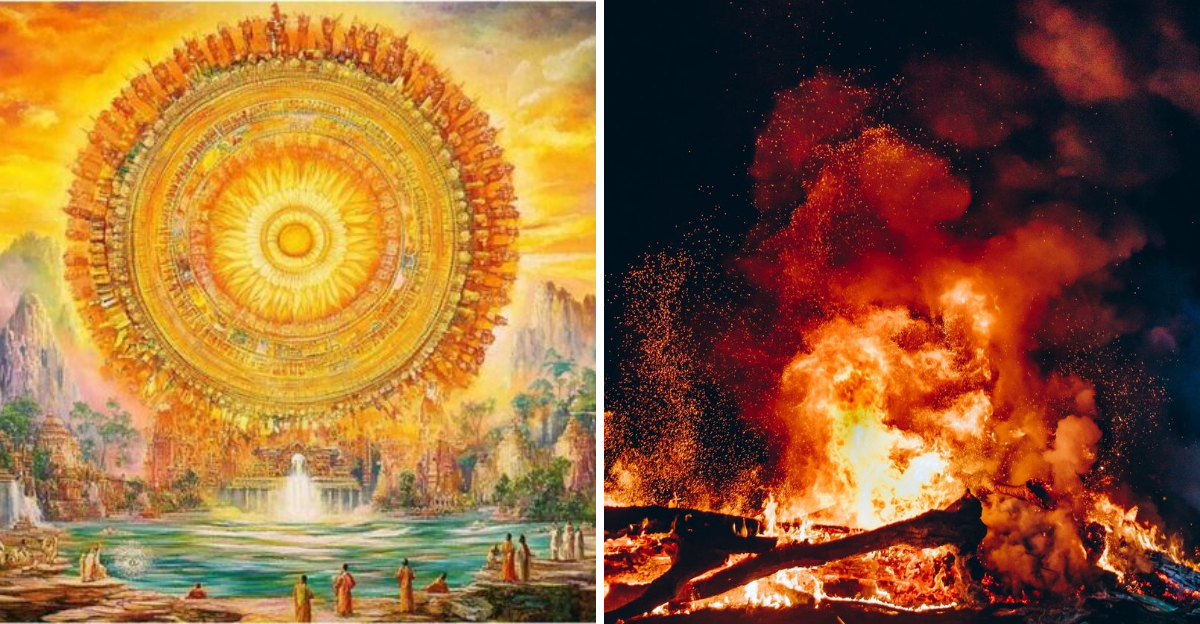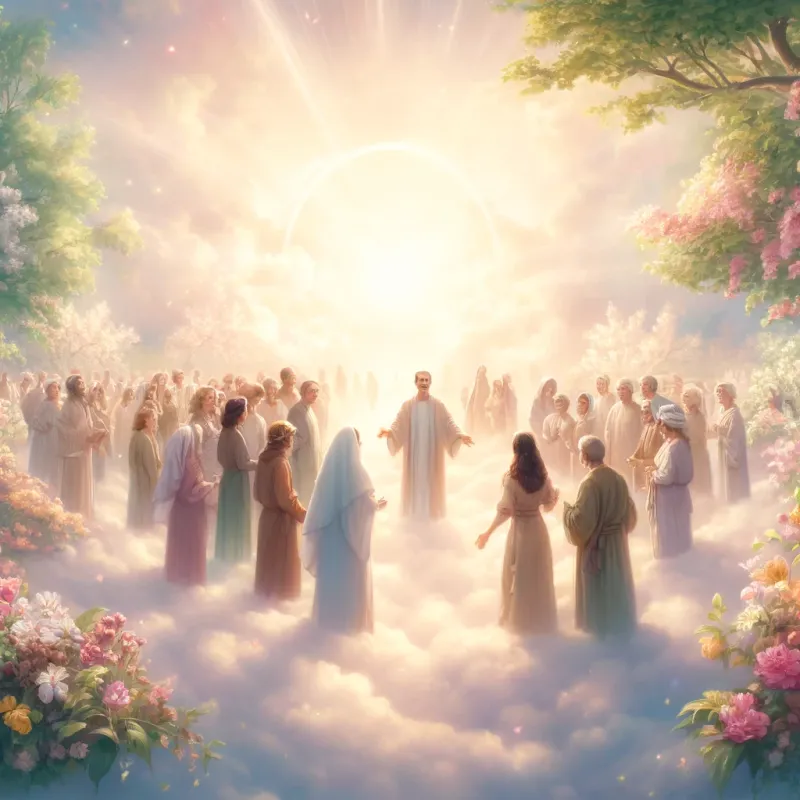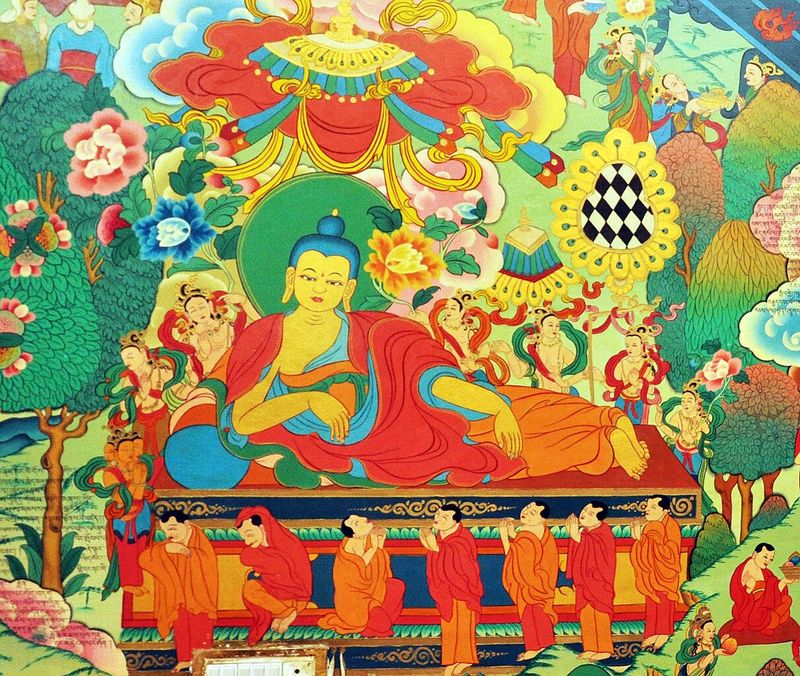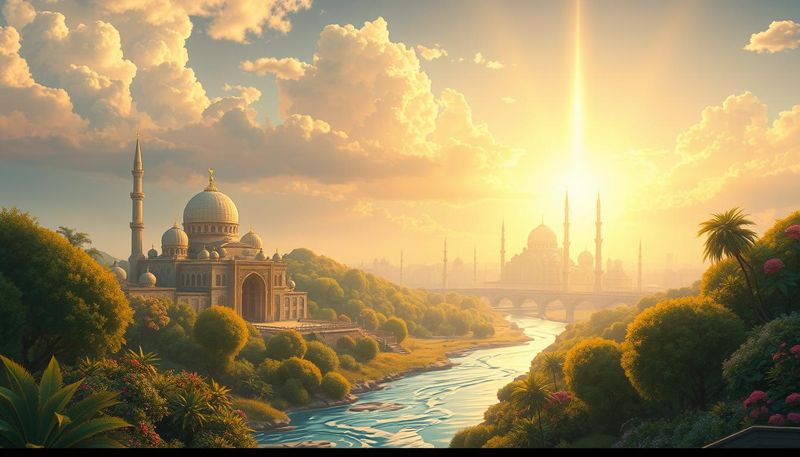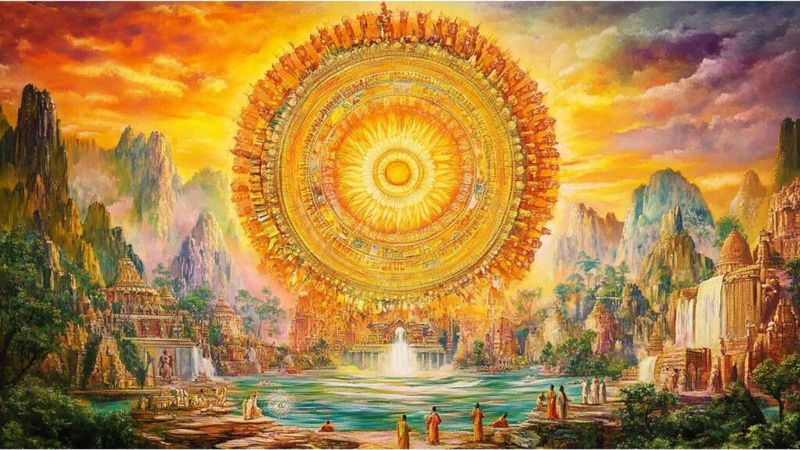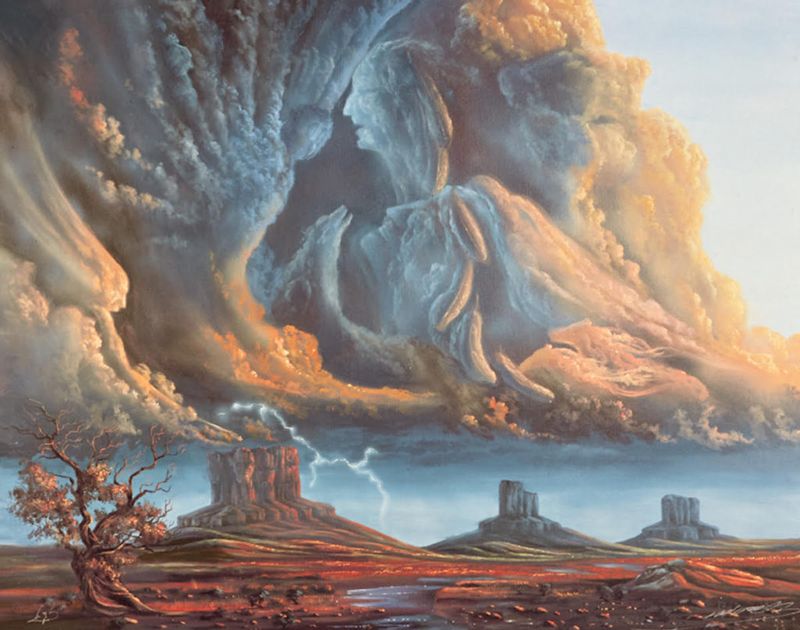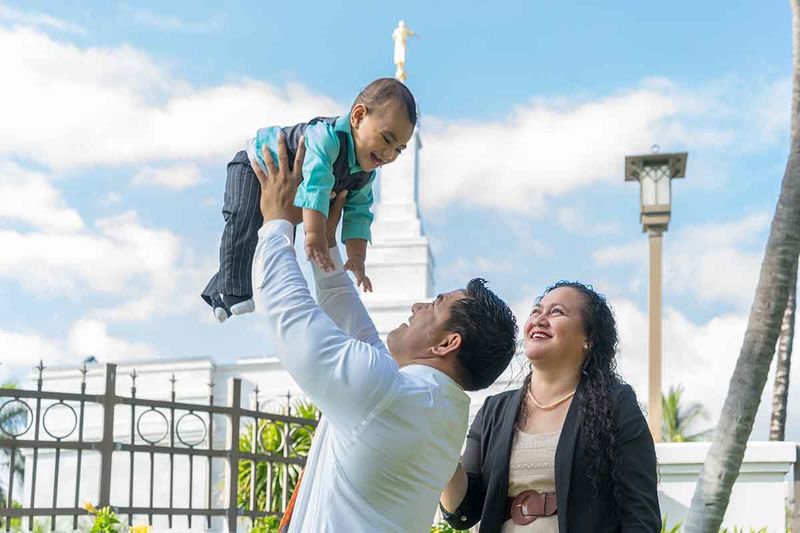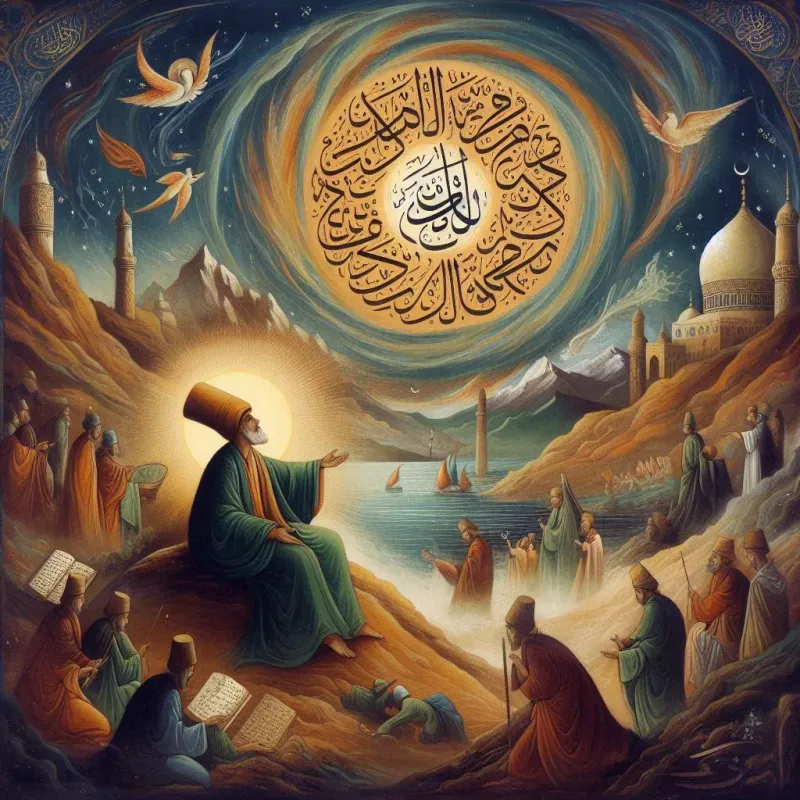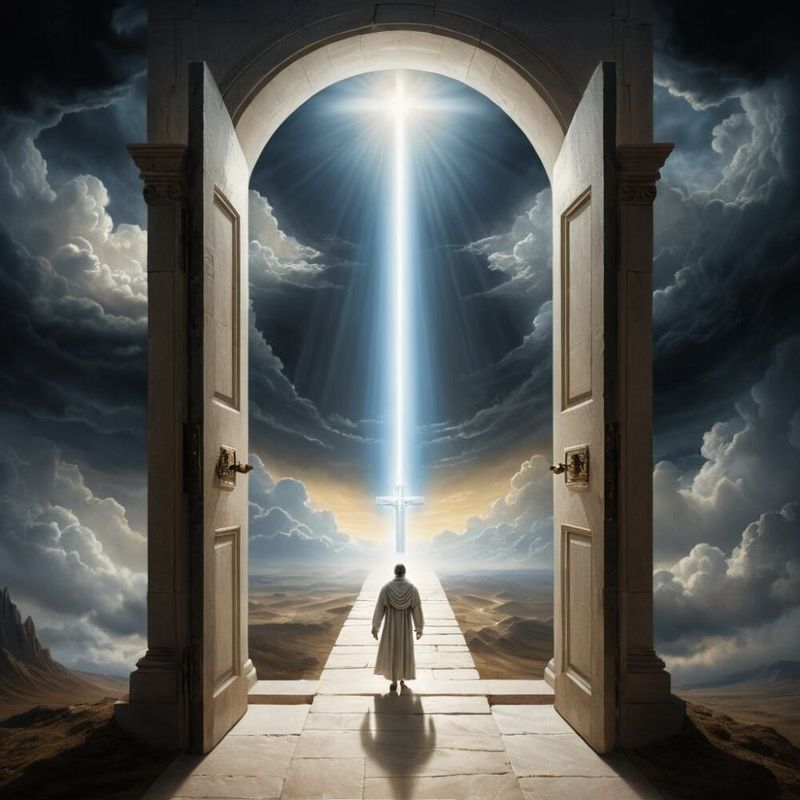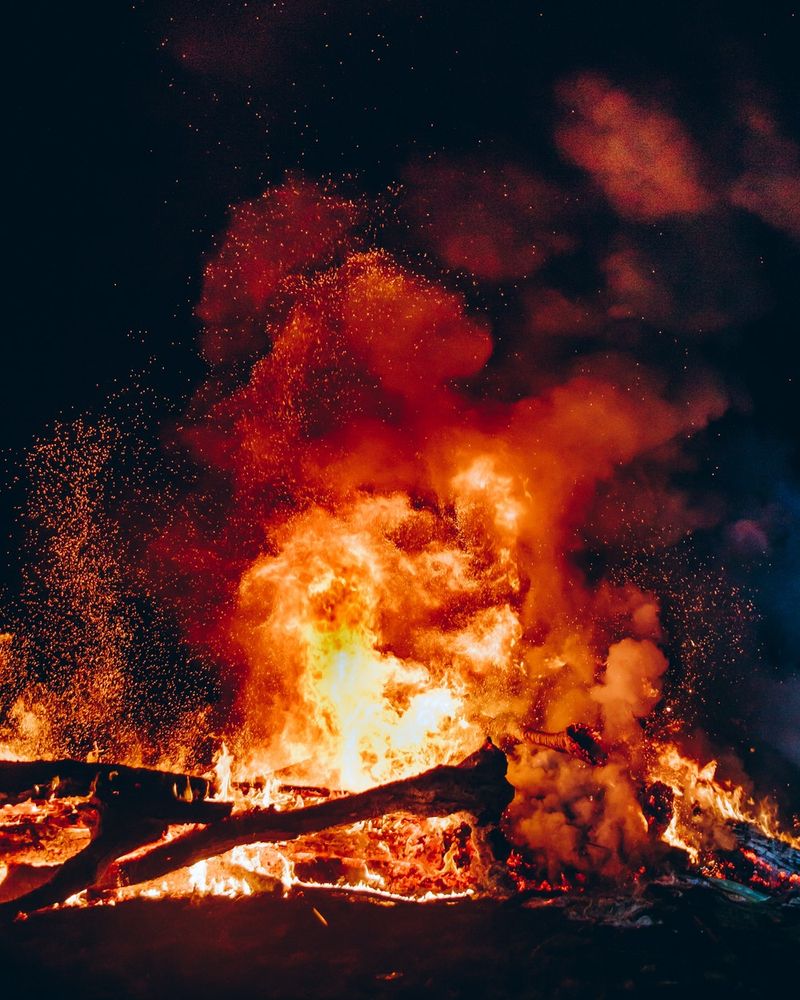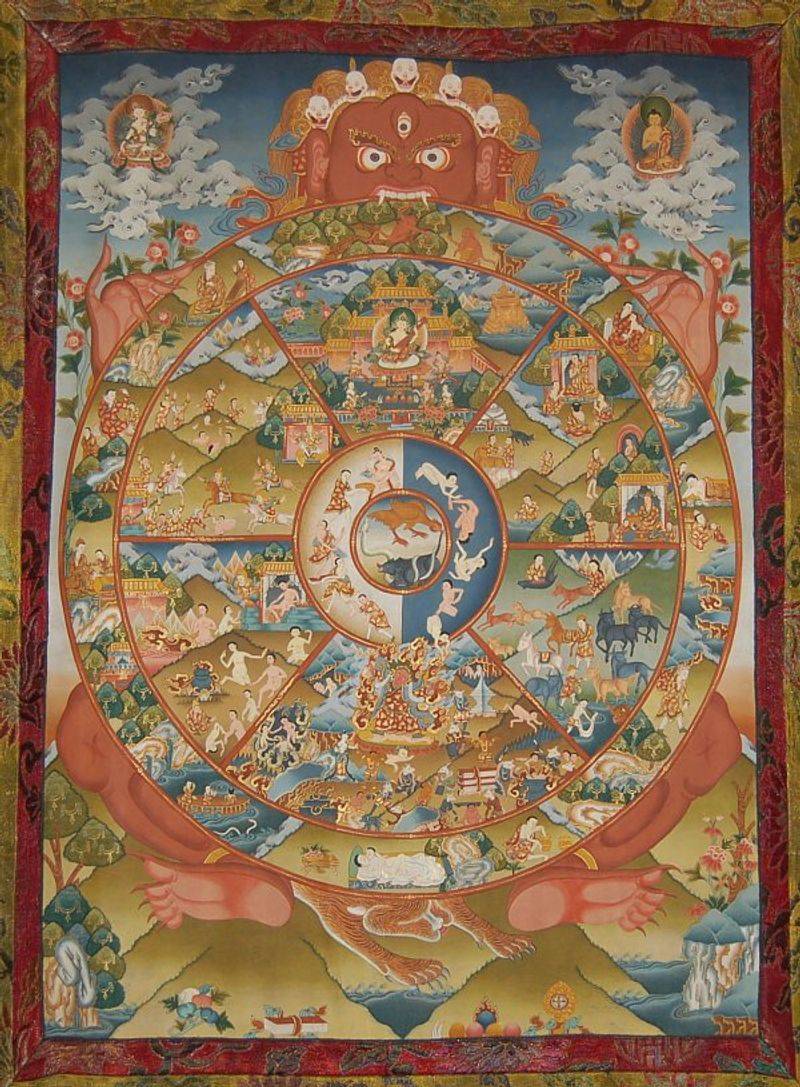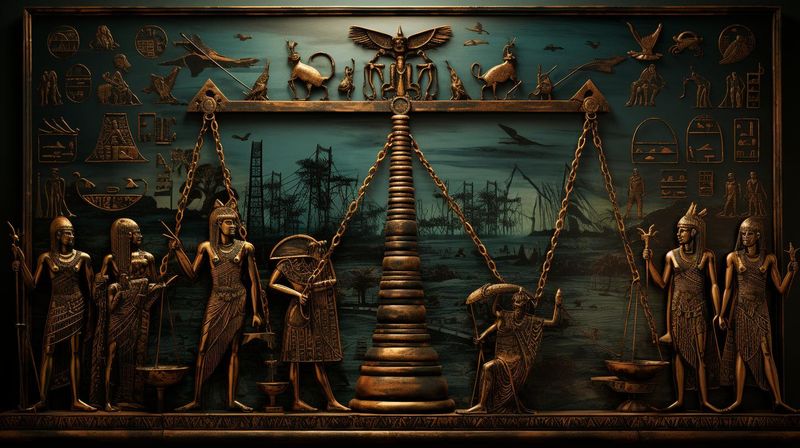Death is the ultimate mystery we all face. Throughout history, religions have developed beliefs about what happens when we die to help people cope with this inevitable journey.
Some traditions offer beautiful visions of peace and reunion, while others warn of judgment and suffering. These beliefs shape how millions of people view mortality and find meaning in life’s final chapter.
1. Reunion With Loved Ones
The thought of seeing deceased family members again brings immense comfort to many Christians. Picture a joyful reunion where grandparents, parents, and friends embrace once more in Heaven’s glow, free from earthly pain.
This belief transforms grief from permanent loss to temporary separation. When Christians gather at funerals, they often speak of their loved one being ‘called home’ to this family reunion.
Children find special comfort in this idea, imagining their departed grandparent watching over them from above. The promise of reconnection helps the bereaved continue their life journey with hope rather than despair.
2. Peaceful Liberation
Buddhism views death not as an ending but as release from life’s endless cycle of suffering. For those who’ve achieved enlightenment, death opens the door to Nirvana—ultimate peace beyond human comprehension.
Monks spend lifetimes preparing for this transition through meditation and mindfulness. The Tibetan Book of the Dead describes this journey in detail, guiding the consciousness through death’s passages.
Buddhist funeral ceremonies reflect this peaceful perspective with their calm rhythms and acceptance. Rather than fighting against mortality, followers embrace it as the natural conclusion to one chapter of existence—perhaps the final one for those who’ve reached enlightenment.
3. Return to the Creator
Muslims view death as going home to Allah after life’s temporary journey. The Quran describes Jannah (Paradise) as gardens beneath which rivers flow—a place of perfect peace and divine presence for the faithful.
Islamic funeral practices reflect this belief with their emphasis on simplicity and swift burial. The body returns to earth while the soul continues its journey toward the Creator.
During difficult times, Muslims often repeat ‘Inna lillahi wa inna ilayhi raji’un’—’To Allah we belong and to Him we shall return.’ This reminds believers that life is a loan, and death merely returns us to our loving Creator who waits with open arms.
4. Cycle of Rebirth
Hindus see death as merely changing clothes—the soul (atman) discards the worn-out body for a fresh one. Your actions in this life determine your next form, creating a cosmic system of justice spanning countless lifetimes.
The ultimate goal isn’t endless rebirth but moksha—liberation from the cycle entirely. Cremation symbolizes this process, releasing the spirit from its temporary housing.
Hindu families find solace knowing their departed aren’t gone forever but continuing their spiritual journey. Even when facing terminal illness, devoted Hindus might view their situation as the natural working of karma, accepting death with remarkable serenity as just another doorway on an infinite path.
5. Becoming One with the Universe
Taoists embrace death as natural transformation—the body returns to earth while the spirit merges with the Tao. Nothing truly disappears; energy simply changes form, flowing back into the cosmic harmony.
Ancient Taoist texts compare death to a drop of water returning to the ocean. Your individual identity dissolves, yet your essence continues as part of everything.
This perspective removes fear by eliminating the boundary between self and universe. Taoist funeral traditions honor this transition with ceremonies that emphasize balance and acceptance. Families find peace knowing their loved one hasn’t vanished but transformed, becoming part of the eternal dance of existence that surrounds them daily.
6. Spirit Lives On
Many Native American traditions believe our ancestors remain present as guiding spirits after death. The veil between worlds thins, allowing continued connection between the living and departed.
Ceremonies honor these relationships through sacred songs, dances, and offerings. The dead aren’t gone but transformed into helpful presences who watch over their descendants.
Families maintain relationships with ancestors through regular communication and remembrance rituals. When facing important decisions, many Indigenous people seek guidance from those who’ve crossed over. This living connection transforms grief into ongoing relationship, providing continuity across generations and ensuring wisdom isn’t lost when elders pass.
7. Immortality of the Soul
Jewish tradition holds that the soul—the divine spark within us—endures beyond physical death. While beliefs vary across branches, many Jews anticipate olam ha-ba (the world to come) where souls await resurrection when the Messiah arrives.
Ancient texts describe a period of judgment followed by purification. The righteous soul experiences divine closeness while awaiting the world’s renewal.
Annual rituals like Yizkor (remembrance prayers) maintain connections between the living and departed. When sitting shiva (the seven-day mourning period), families find comfort knowing their loved one’s essence continues. The Hebrew phrase ‘May their memory be a blessing’ reflects how the departed soul lives on through its positive influence on those who remain.
8. Eternal Progression
Latter-day Saints (Mormons) believe death opens the door to continued growth and learning. Their unique doctrine teaches that families can be ‘sealed’ together forever in sacred temple ceremonies that transcend mortality.
The afterlife includes multiple kingdoms of glory where souls continue developing toward their divine potential. Death becomes not an ending but a graduation to the next phase of existence.
Mormon funerals often feel surprisingly hopeful, focusing on reunion and continued relationships. Parents find particular comfort knowing their connection to children continues eternally. This perspective transforms marriage vows from ’till death do us part’ to relationships that span eternity, creating profound family bonds.
9. Union with Divine Love
Mystics across faiths describe death as the soul’s ecstatic reunion with divine love. Sufi poets like Rumi compare it to a lover finally embracing the beloved after long separation.
Christian mystics speak of the soul merging with God like a drop of water returning to the ocean. This perspective transforms death from loss to homecoming—the ultimate fulfillment of spiritual longing.
Mystical traditions often use wedding imagery for death, celebrating the soul’s union with divinity. Those who’ve had near-death experiences sometimes report overwhelming love that eliminates fear. For the devout mystic, death becomes not something to dread but the culmination of their spiritual journey—final union with the love they’ve sought their entire lives.
10. The Great Mystery as Peaceful Transition
Modern spiritual movements embrace death’s uncertainty as something beautiful rather than frightening. Unitarian Universalists and similar progressive faiths view the unknown as potentially wonderful—a peaceful transition or new beginning.
Without dogmatic afterlife claims, these traditions focus on the mystery itself. Death becomes a doorway to whatever lies beyond—perhaps reunion, perhaps peaceful rest, perhaps something beyond imagination.
Memorial services celebrate the deceased’s life and legacy rather than focusing on afterlife specifics. This approach allows for hope without rigid doctrine. By embracing mystery instead of fearing it, followers find peace in accepting what cannot be known, focusing instead on living meaningfully while honoring those who’ve completed their journey.
1. Eternal Damnation
Hell—a place of endless torment—remains one of religion’s most terrifying concepts. Traditional interpretations in Christianity and Islam describe unbearable suffering for sinners who reject divine guidance.
Medieval artwork vividly depicts souls writhing in flames or tortured by demons for eternity. The permanence makes it particularly frightening—no escape, no relief, forever.
Though many modern religious leaders emphasize divine mercy over punishment, the concept still haunts cultural imagination. Children raised with graphic hell imagery sometimes develop religious trauma. The idea that a single lifetime determines eternal fate creates existential anxiety for many believers, who worry about loved ones possibly suffering forever.
2. Wandering Ghosts
East Asian traditions warn that improper death or neglected funeral rites may trap souls between worlds as hungry ghosts. These restless spirits wander eternally, unable to find peace or rebirth.
Chinese and Japanese ghost stories describe these pitiful beings—forever hungry yet unable to eat, seeking vengeance for their unresolved deaths. Families perform elaborate rituals to prevent this fate.
The Hungry Ghost Festival features offerings to appease these trapped souls. This belief creates particular anxiety around sudden or violent deaths where proper ceremonies couldn’t be performed. The thought of becoming a restless spirit—or worse, having a loved one suffer this fate—motivates meticulous attention to funeral traditions and ancestor veneration.
3. Karmic Rebirth into Suffering
Buddhist and Hindu traditions warn that negative karma may result in rebirth into realms of intense suffering. The Wheel of Samsara depicts animal realms, hungry ghost realms, and hell realms awaiting those with negative karma.
Ancient texts describe specific torments matching one’s misdeeds. A lifetime of cruelty might lead to countless rebirths as prey animals experiencing the same suffering once inflicted on others.
What makes this especially frightening is its cosmic justice—you create your fate through your actions. The Tibetan Book of the Dead details these potential destinations as warnings to live ethically. For believers, daily choices carry tremendous weight, potentially determining thousands of future lifetimes of suffering before achieving a human rebirth again.
4. Judgment After Death
Facing divine judgment—having every thought, word, and deed examined—terrifies many believers. Abrahamic faiths describe this reckoning where nothing remains hidden from divine scrutiny.
Egyptian traditions pioneered this concept with Anubis weighing the heart against a feather of truth. Christianity envisions the Book of Life opened, revealing everything once hidden.
The finality and thoroughness make this especially frightening—no excuses or second chances. Muslims believe in the Mizan (scales) weighing good against evil deeds. Jewish tradition speaks of the Book of Life sealed on Yom Kippur. This universal accounting creates existential anxiety even among devout believers, who wonder if their good deeds will outweigh their failings.
5. Being Forgotten
Many indigenous traditions believe the deceased require remembrance from the living to maintain their existence in the afterlife. When no one remains who remembers you, a second death occurs—true extinction of self.
The Mexican Day of the Dead celebrates this connection, believing ancestors can visit when remembered with offerings and stories. Forgetting them severs this lifeline.
This creates a particularly poignant fear—not just physical death but eventual erasure from memory. Japanese Buddhist traditions include similar beliefs about ancestors requiring regular offerings. This concept appears in popular culture like Disney’s ‘Coco,’ which powerfully illustrates the fear of being completely forgotten after death—a fate potentially worse than death itself.
